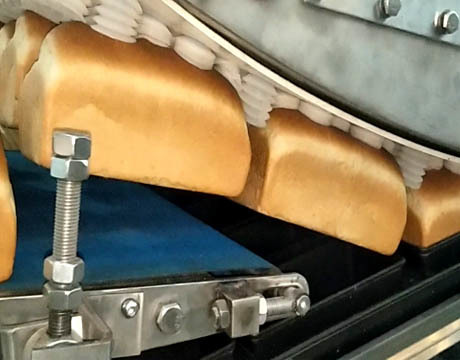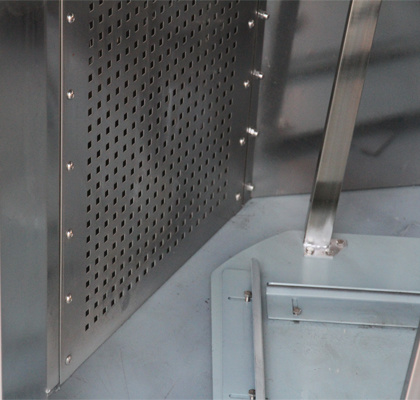Welcome To Know Our Products, We Can Offer You High Quality Products!
WhatsApp / WeChat : 008615127880005
Email : info@aocno.com
Innovative Ways to Improve Industrial Cooling Efficiency with Spiral Cooling Towers
2025-02-23
Innovative Ways to Improve Industrial Cooling Efficiency with Spiral Cooling Towers
Table of Contents
- Introduction to Spiral Cooling Towers
- What Are Spiral Cooling Towers?
- Advantages of Spiral Cooling Towers
- Key Technologies in Spiral Cooling
- Improving Efficiency Through Design Innovations
- Energy-Saving Techniques for Spiral Cooling Towers
- Case Studies: Success Stories with Spiral Cooling Towers
- The Future of Cooling Technology
- Conclusion
- FAQs
Introduction to Spiral Cooling Towers
In the rapidly evolving world of industrial processes, efficient cooling systems are more critical than ever. **Spiral cooling towers** have emerged as an innovative solution capable of maximizing cooling efficiency while minimizing energy consumption. This article explores the transformative potential of spiral cooling towers, detailing their design, operational benefits, and the latest advancements that can significantly improve industrial cooling efficiency.
What Are Spiral Cooling Towers?
Spiral cooling towers are specialized cooling systems designed to enhance the heat exchange process in various industrial applications. Unlike traditional cooling towers, spiral cooling towers utilize a unique spiral design that promotes better airflow and water distribution, leading to **improved thermal performance**.
These towers operate by allowing hot water to spiral down from the top while cool air flows upward, resulting in optimal heat dissipation. The structure not only saves space but also improves the overall efficiency of the cooling process, making it a favorite among industries with high cooling demands.
Advantages of Spiral Cooling Towers
1. Enhanced Cooling Efficiency
The spiral design of these cooling towers facilitates better heat exchange, leading to significantly lower outlet water temperatures. This increased efficiency translates to lower energy costs and improved operational performance.
2. Space-Saving Design
With their compact structure, spiral cooling towers occupy less ground space compared to conventional cooling towers. This attribute is particularly beneficial for urban settings where land availability is limited.
3. Reduced Water Consumption
Spiral cooling towers are engineered to minimize water loss through evaporation, making them more sustainable and environmentally friendly. They utilize advanced water recirculation techniques that can dramatically reduce overall water consumption.
4. Easy Maintenance
The design of spiral cooling towers also simplifies maintenance processes. The accessibility of components ensures that routine inspections and repairs can be conducted quickly, minimizing downtime and associated costs.
Key Technologies in Spiral Cooling
The evolution of spiral cooling towers has been supported by several technological advancements that enhance their performance and reliability.
1. Advanced Material Science
Modern spiral cooling towers are constructed using advanced materials that resist corrosion and wear, enhancing their longevity and performance. These materials also improve thermal conductivity, facilitating better heat exchange.
2. Automated Control Systems
Integration of automated control systems allows for real-time monitoring and optimization of cooling performance. These systems can adjust water flow rates and fan speeds based on temperature fluctuations, ensuring optimal operation at all times.
3. Environmental Sensors
Incorporating environmental sensors helps monitor weather conditions and air quality, allowing the cooling system to adjust its operations accordingly. This feature not only improves efficiency but also contributes to sustainability efforts.
Improving Efficiency Through Design Innovations
Design plays a crucial role in the efficiency of spiral cooling towers. Here, we explore several innovative design strategies that can enhance their performance.
1. Optimized Airflow
A well-designed airflow system ensures that air reaches all parts of the tower efficiently. Engineers are increasingly using computational fluid dynamics (CFD) simulations to optimize airflow patterns and enhance cooling efficiency.
2. Modular Designs
Modular designs allow for scalability and flexibility, enabling industries to expand their cooling capacity as needed. This adaptability is particularly beneficial for businesses that experience fluctuating cooling demands.
3. Insulation and Heat Recovery Systems
Integrating insulation materials and heat recovery systems can significantly improve the overall thermal efficiency of spiral cooling towers. These enhancements reduce energy consumption and improve the sustainability of operations.
Energy-Saving Techniques for Spiral Cooling Towers
In today's climate-conscious world, energy efficiency is paramount. Here are some effective energy-saving techniques for spiral cooling towers:
1. Variable Frequency Drives (VFDs)
Implementing VFDs on cooling tower fans allows for precise control of fan speeds based on cooling load requirements. This adjustment can lead to substantial energy savings, particularly in fluctuating operational conditions.
2. Heat Exchangers
Utilizing heat exchangers can improve energy efficiency by capturing waste heat from industrial processes and using it to preheat incoming water, thus reducing the energy required for cooling.
3. Regular Maintenance and Upgrades
Routine maintenance ensures that all components of the cooling tower operate at peak efficiency. Additionally, upgrading to energy-efficient components can further enhance performance and reduce operational costs.
Case Studies: Success Stories with Spiral Cooling Towers
Examining real-world applications of spiral cooling towers provides valuable insights into their effectiveness.
1. Manufacturing Facility Reduction in Cooling Costs
A manufacturing facility implemented spiral cooling towers and reported a **30% reduction** in cooling costs within the first year. This significant savings was attributed to the enhanced thermal efficiency and reduced water consumption of their new system.
2. Chemical Processing Plant Efficiency Improvement
In a chemical processing plant, replacing traditional cooling towers with spiral designs led to a marked improvement in product quality and consistency due to better temperature regulation. The plant also noted a **40% decrease** in energy consumption.
The Future of Cooling Technology
The future of industrial cooling technology is bright, with continuous advancements in materials, design, and automation driving innovation. Spiral cooling towers are at the forefront of this evolution, paving the way for even greater efficiency and sustainability.
As industries strive for greener operations, the adoption of spiral cooling towers is expected to grow, particularly in sectors with high cooling demands such as manufacturing, chemical processing, and data centers.
Conclusion
In summary, spiral cooling towers represent a significant leap forward in industrial cooling efficiency. Their innovative design, combined with advanced technologies and energy-saving techniques, positions them as a leading solution for businesses seeking to enhance performance while reducing operational costs. As industries continue to embrace sustainability and efficiency, the adoption of spiral cooling towers will undoubtedly play a pivotal role in revolutionizing industrial cooling processes.
FAQs
1. What industries can benefit from spiral cooling towers?
Spiral cooling towers are beneficial in various industries, including manufacturing, chemical processing, power generation, and data centers, where efficient cooling is essential.
2. How do spiral cooling towers compare to traditional cooling towers?
Spiral cooling towers offer enhanced efficiency, reduced water consumption, and a smaller footprint compared to traditional cooling towers.
3. What are the maintenance requirements for spiral cooling towers?
Regular maintenance includes cleaning, inspecting components, and ensuring proper operation of control systems. This upkeep is essential for optimal performance.
4. Can spiral cooling towers be used in hot climates?
Yes, spiral cooling towers are designed to operate effectively in various climatic conditions, including hot environments, making them versatile for different industrial applications.
5. Are there any environmental benefits of using spiral cooling towers?
Yes, spiral cooling towers reduce water consumption and energy usage, contributing to more sustainable industrial operations and lower environmental impact.
keywords:
RELEVANT INFORMATION
Optimizing Your Bread Production Line for Maximum Efficiency
2025-05-29
Master the Art of Baking with the Right Equipment – Your Comprehensive Guide
2025-05-24
Unlock the Art of Home Baking with a Bread Making Machine
2025-05-19











